ssp. arcuatus (Linnaeus, 1758)
Subfamilia: CERAMBYCINAE / Tribus: CLYTINI
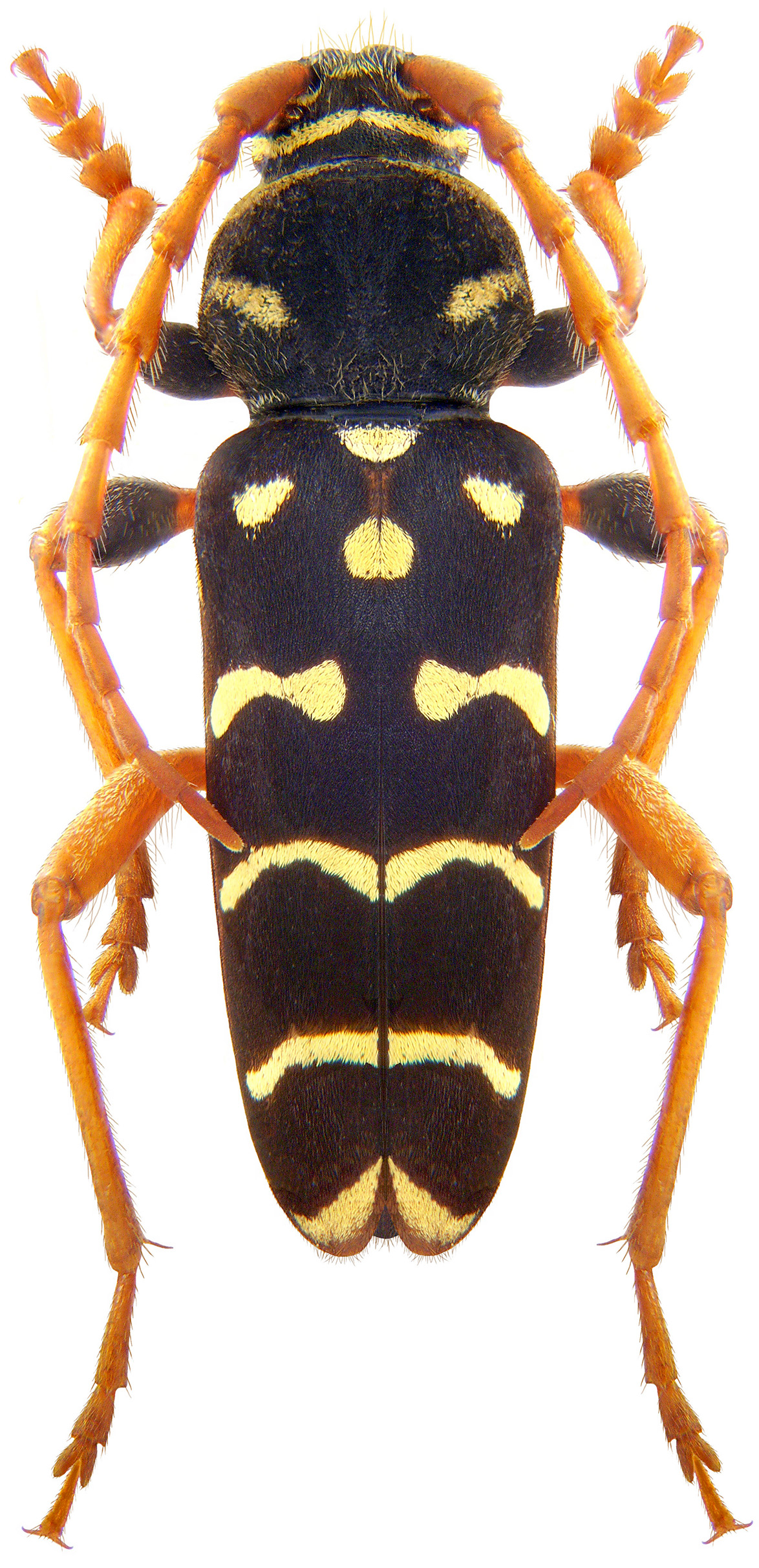
[Photo © David Navrátil, click on the picture for 4K resolution]
Plagionotus arcuatus is a very common European species developing in a variety of deciduous trees. P. arcuatus arcuatus larvae feed subcortically in dead trunks and thick branches, then enter the sapwood where create hook-shaped pupal cells (usually 2-4 cm under sapwood surface, rarely 6-8 cm). Exceptionally larvae pupate in thick bark or under the bark. Pupation occurs in spring and adults can be observed running restless or mating on fallen trunks during sunny days from mid-spring to mid-summer [❖][▽].
Plagionotus arcuatus has been described from "Europa" as Leptura arcuata by Carl Linné in 1758 [✳].
Body length: 8 - 20 mm Life cycle: 1 (2) years Adults in: May - July Host plant: polyphagous in deciduous trees (Quercus, Castanea, Fagus, Carpinus, Juglans, Prunus, Robinia, Vitis, Salix, etc.) Distribution: Europe, Caucasus, Transcaucasia, North Africa, Turkey, North Iran
The depicted mounted beetle were collected in: ♂ - Kolby forest near Pouzdřany village (Břeclav district, South Moravia, Czechia) on May 8, 2003; ♀ - Dragoman (Драгоман) environs (Sofia province, Bulgaria) on May 30, 2008. The living beetles in the pictures have been photographed in Prague-Jarov (Central Bohemia, Czechia) on May 23, 2016.Collected by David Navrátil and Michal Hoskovec
[❖]
Sláma M.E.F.:
Tesaříkovití – Cerambycidae České republiky a Slovenské republiky / Cerambycidae of the Czech Republic and Slovak Republic.
Milan Sláma private printing, Krhanice, 383pp [pages 156-157], 1998 [ISBN: 80-238-2627-1]. [download]
[▽]
Vitali F.:
Atlas of the Insects of the Grand-Duchy of Luxembourg: Coleoptera, Cerambycidae.
Ferrantia, Musée national d’histoire naturelle, Luxembourg 79: 1-208 [pages 47-48], 2018. [download]
[✳]
Linné C.:
Systema naturæ per regna tria naturæ secundum classes, ordines, genera, species, cum characteribus, differentiis, synonymis, locis.
Systema naturae (Editio 10) Laur. Salvius, Holmiae 1: 824pp [page 399], 1758. [download]
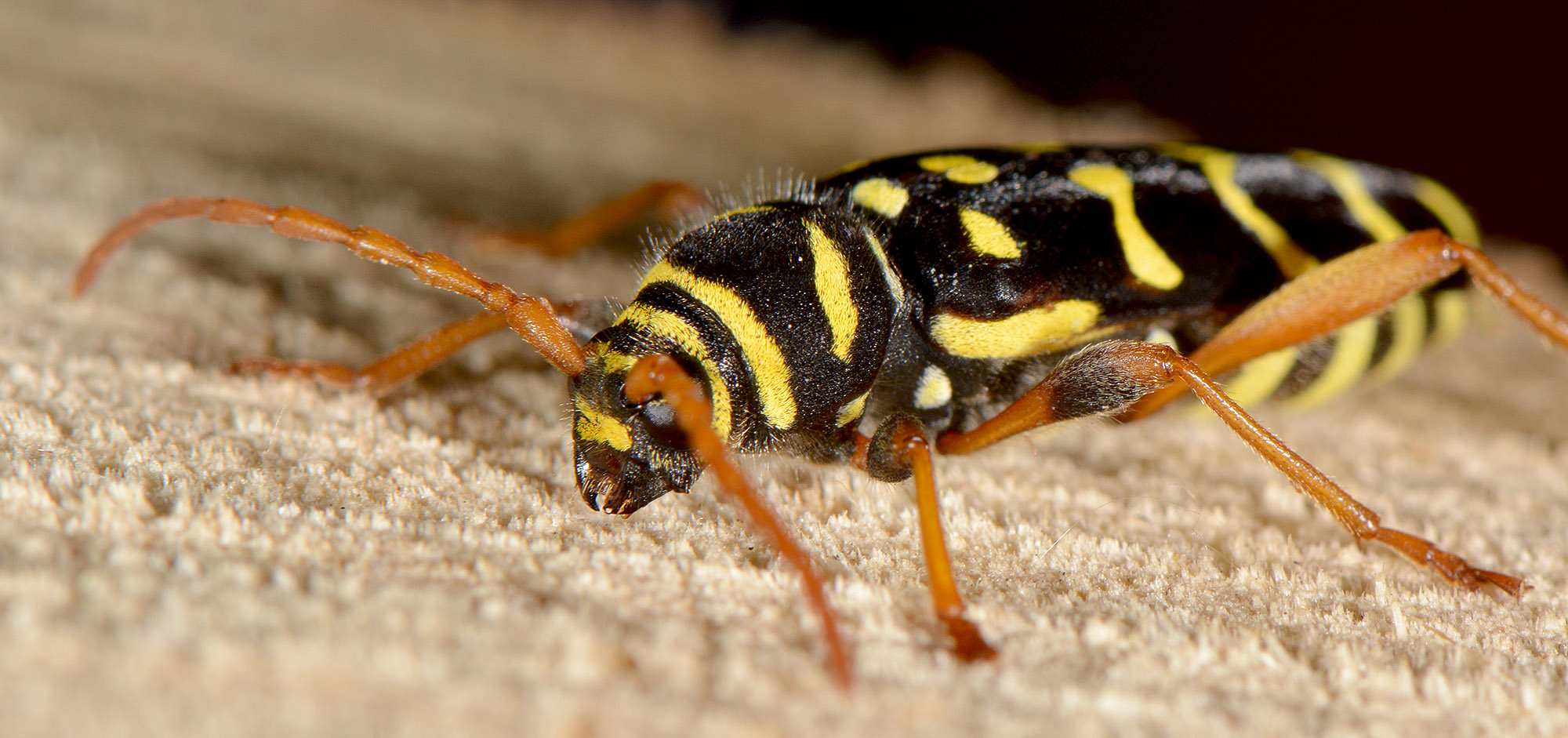
[Photo © Michal Hoskovec]

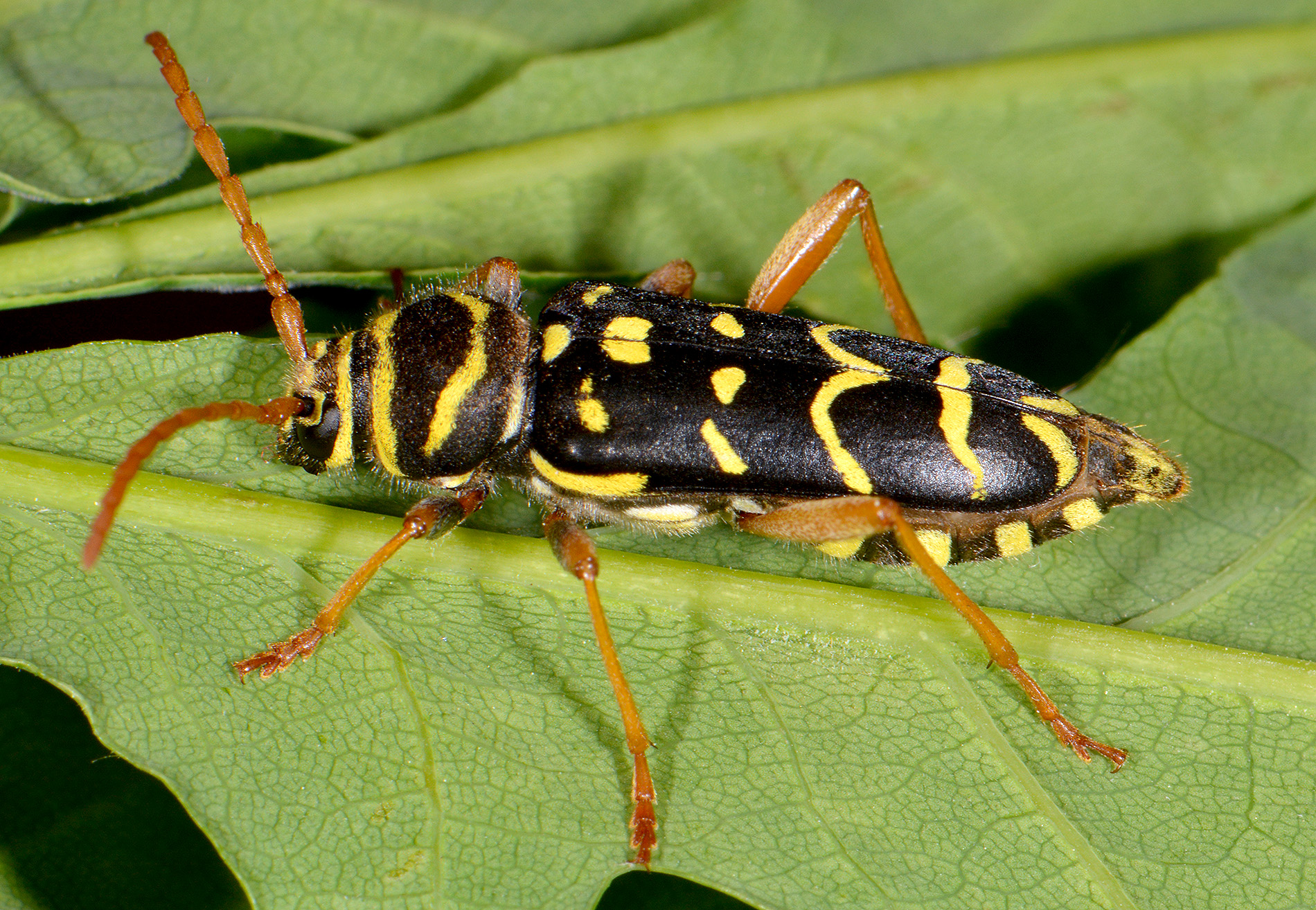
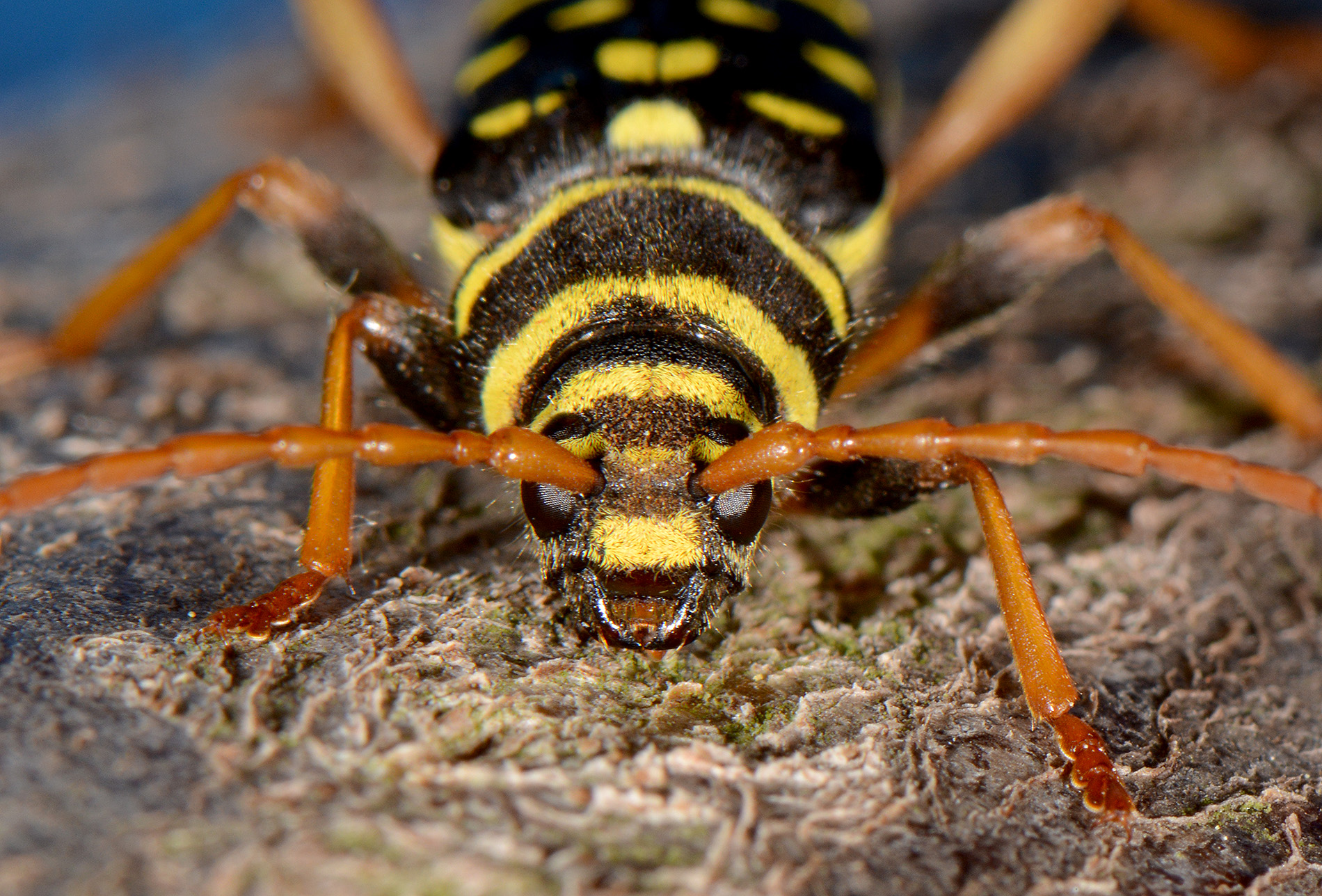
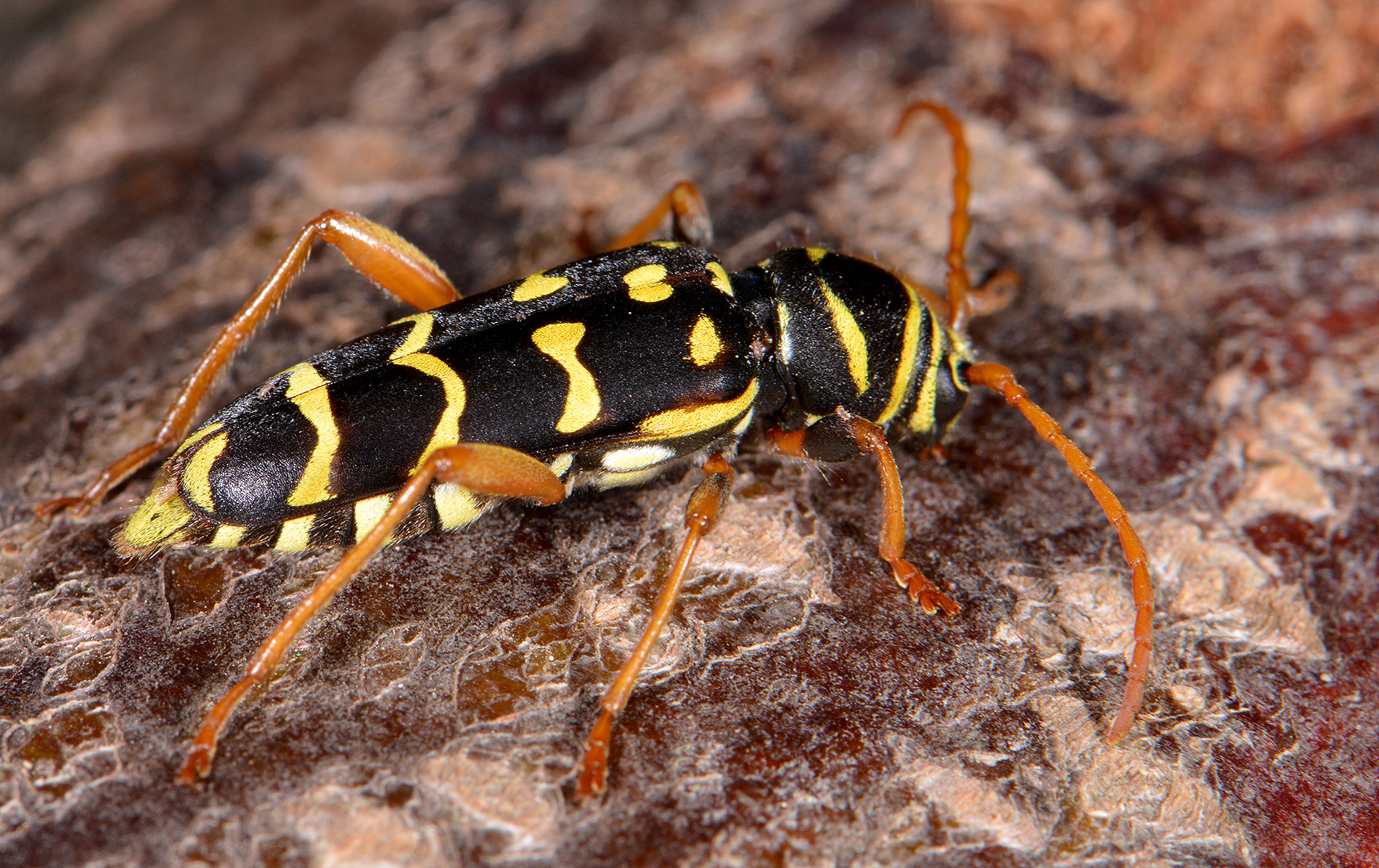
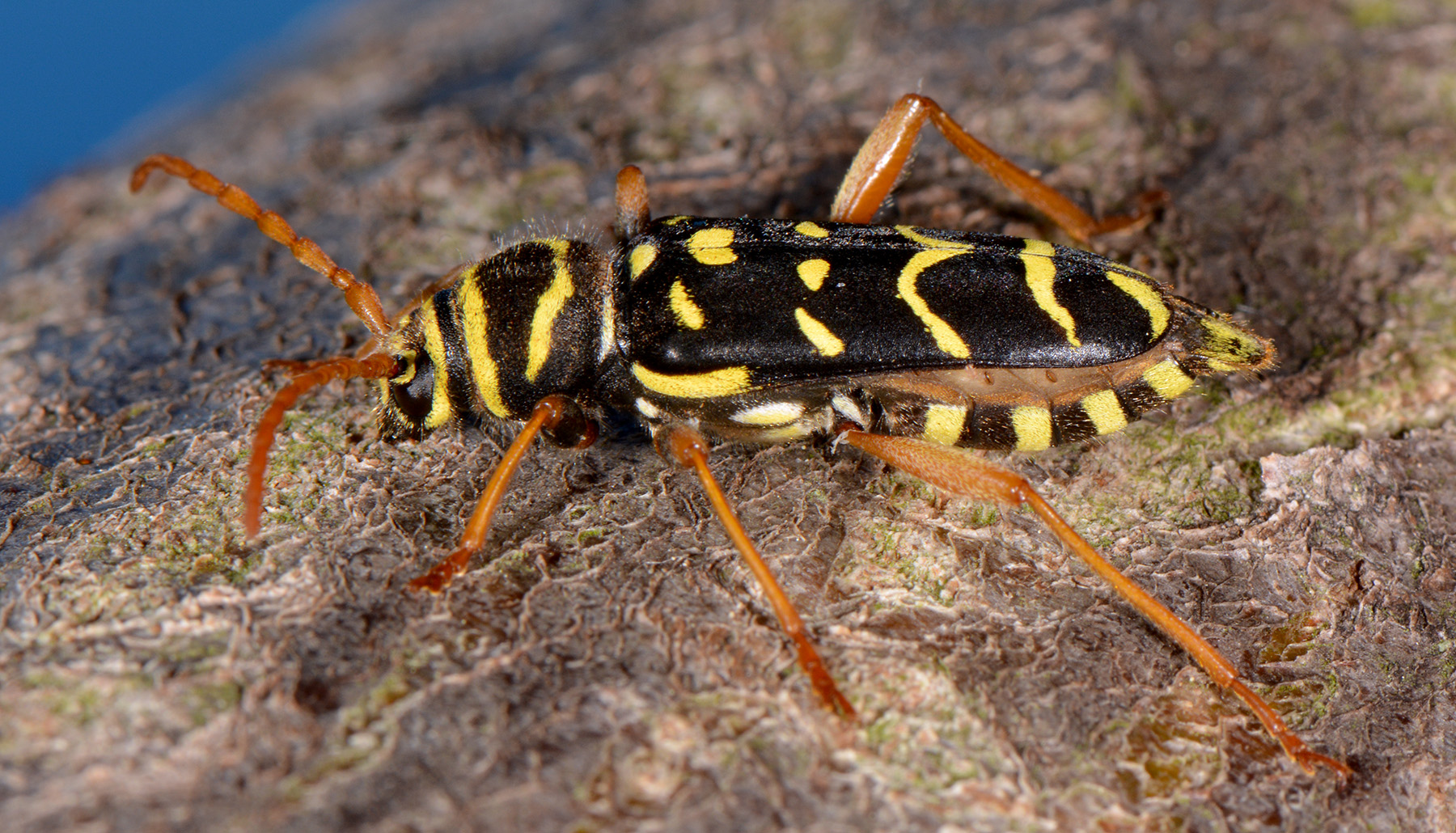 >
>
[Photo © Michal Hoskovec]
| Subfamilia | Cerambycinae Latreille, 1802 |
| Tribus | Clytini Mulsant, 1839 |
| Genus | Plagionotus Latreille, 1829 |
| Species | Plagionotus arcuatus (Linnaeus, 1758) |
| Subspecies | Plagionotus arcuatus arcuatus (Linnaeus, 1758) |
